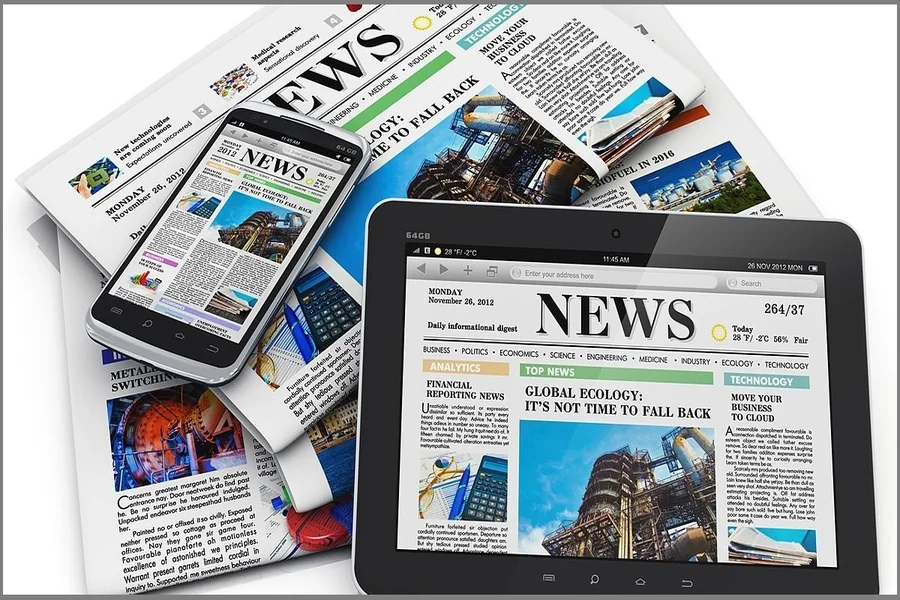The Impact of Social Media on Modern News Stories

The growth of social media has altered communication in every way and news reporting is affected as well. News was once spread mainly through newspapers, television and radio, but now, Facebook, Twitter, Instagram and TikTok have a big impact. Because of this, journalists today have entirely new methods for sourcing, reporting, sharing and receiving modern news which have led to both possibilities and difficult issues in journalism.
Realizing the huge effect that social media has on current news coverage helps us see how information is spreading and what that means for the world.
Acceleration of News Distribution
Using social media makes it much quicker for modern news to be shared. A story can be shared with millions rapidly, bypassing the usual newspaper and magazine reviewers. Since information shows up instantly, social media makes it possible for users to learn about modern news as soon as someone at the scene shares it.
Moving information at such a fast pace can shape things in big ways. It improves how much people follow events by giving them access to developing news in real time. To some extent, news sites and journalists are expected to keep up quickly, often releasing information without fully checking it first.
Democratization of News Production
Because of social media, anyone can now make and share content or report stories as citizen journalists. Having a smartphone now means anyone can film and share important happenings around the world. It makes sure various voices and viewpoints are represented, since some mainstream media could have blind spots.
When crises, protests or disasters hit, people on platforms like Twitter quicky post live updates, pictures and videos. They make it easier for people to unite and focus on certain issues which can start movements and encourages the media to pay attention.
Luckily, the benefit of democratization is also a challenge; it lets unverified, biased information spread which slows the progress of the news industry.
Shift in News Consumption Habits
Social media has fundamentally altered how people consume modern news. The traditional model of actively seeking news from established sources has given way to passive consumption, where news appears alongside personal updates, entertainment, and advertisements in algorithm-curated feeds.
Algorithms prioritize content based on user behavior, often reinforcing existing beliefs and preferences through echo chambers and filter bubbles. This selective exposure limits diversity in information, potentially polarizing audiences and reducing critical engagement with news.
Additionally, the rise of short-form video content on platforms like TikTok and Instagram Reels caters to decreasing attention spans, emphasizing brevity and emotional appeal over in-depth analysis.
Challenges for Journalistic Integrity
The pressure to publish quickly on social media conflicts with the traditional journalistic values of accuracy, verification, and contextual depth. The race to be first can sometimes lead to the dissemination of incomplete or false information, damaging public trust.
News organizations face the challenge of balancing speed with responsibility, often employing dedicated social media teams to monitor trends, fact-check viral content, and correct misinformation in real time.
Furthermore, social media’s monetization model incentivizes sensationalism and clickbait, which can degrade the quality of news stories and contribute to information overload.
Enhanced Audience Engagement and Interaction
Social media facilitates direct interaction between journalists, news organizations, and their audiences. Readers can comment, share opinions, and engage in discussions, creating a two-way communication channel that enhances transparency and accountability.
This engagement allows newsrooms to gauge public sentiment, crowdsource information, and respond promptly to feedback, fostering a more participatory form of journalism.
However, it also exposes journalists to harassment, trolling, and the spread of hostile or false comments, which can negatively impact the reporting environment.
The Role of Influencers and Alternative Media
The influence of social media celebrities and alternative news sources has grown alongside traditional media outlets. Influencers with large followings can shape public opinion and news agendas by sharing their perspectives, often blurring lines between entertainment and serious journalism.
Alternative media channels may challenge mainstream narratives, promoting investigative reporting or marginalized viewpoints, but they can also become platforms for conspiracy theories and misinformation.
This complex dynamic forces traditional news organizations to adapt strategies, collaborate, and sometimes compete in the fast-evolving social media space.
Global Reach and Cultural Exchange
Social media transcends geographic boundaries, allowing news stories to circulate globally in seconds. This connectivity fosters cross-cultural awareness and global solidarity by exposing audiences to events and issues beyond their immediate environment.
International crises, social justice movements, and humanitarian causes gain worldwide attention and support through viral posts and campaigns.
At the same time, cultural nuances and context may be lost or misinterpreted. Leading to oversimplification or biased portrayals in viral news stories.
The Future of News
As social media continues to evolve, its impact on modern news stories will deepen. Emerging technologies like artificial intelligence, augmented reality, and blockchain could further transform news verification, storytelling, and monetization.
Simultaneously, regulatory frameworks may evolve to address challenges like data privacy, platform accountability, and the ethical use of user-generated content.
FAQs
Q1: How has social media changed the speed of news reporting?
Social media enables real-time sharing of news, allowing stories to spread instantly worldwide, dramatically increasing the speed of news reporting compared to traditional media.
Q2: What is citizen journalism and how does social media support it?
Citizen journalism refers to ordinary people reporting news events. Social media provides accessible platforms for these individuals to share firsthand accounts and media.
Q3: Why do social media algorithms impact news diversity?
Algorithms tailor content to users’ preferences, which can create echo chambers where users only see news that reinforces their existing beliefs, limiting exposure to diverse viewpoints.
Q4: What are the risks of relying on social media for news?
Risks include the spread of misinformation, lack of context, sensationalism, and difficulty distinguishing credible sources from unreliable ones.
Q5: How do news organizations maintain credibility on social media?
They prioritize fact-checking, transparency, timely corrections, and engage with audiences to build trust while avoiding clickbait and sensational headlines.
Q6: What role do influencers play in modern news?
Influencers can shape public opinion by sharing news content and personal views, sometimes blending entertainment with journalism, affecting how audiences perceive stories.








